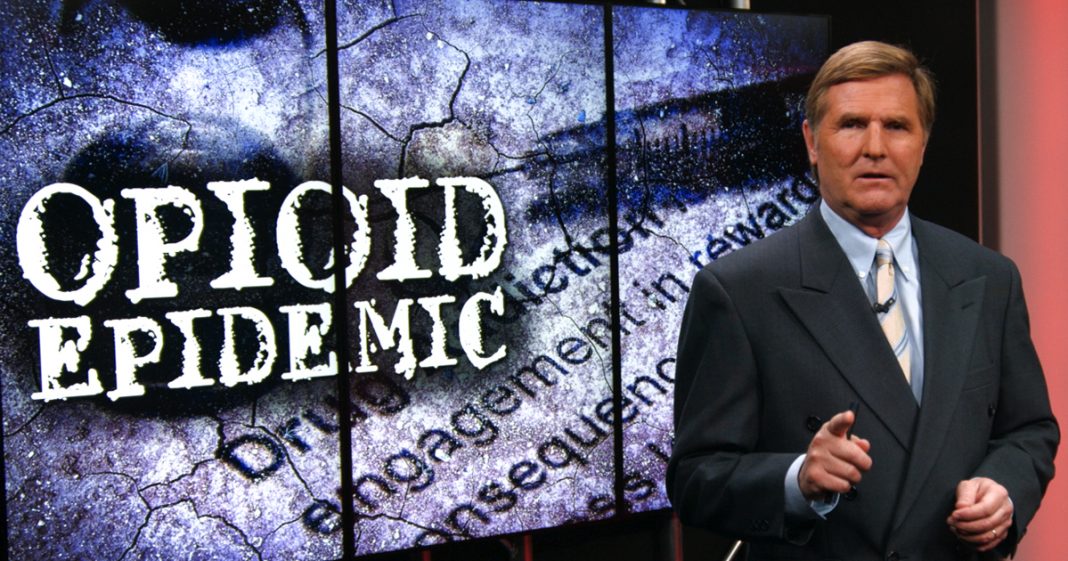According to data by the Center for Disease Control, 91 Americans die every day from overdosing on opioids, in the form of both prescription drugs and drugs like heroin. But its that first class – prescription painkillers – that is a major cause for concern. America’s Lawyer Mike Papantonio talks about the painkiller epidemic brought upon by Big Pharma.
Transcript of the above video:
According to data by the Center for Disease Control, 91 Americans die every day from overdosing on opioids, in the form of both prescription drugs and drugs like heroin. But its that first class – prescription painkillers – that is a major cause for concern.
The opioid painkiller Oxycontin was approved by the FDA in 1995, and made its way onto the market in 1996. That first year it pulled in $45 million in profit for the small drug company Purdue Pharma. At the time, few people had ever even heard of this drug company, but their blockbuster painkiller was going to make them famous. In just 15 years, their profits from Oxycontin had topped more than $3 billion a year.
While Purdue was busy counting their cash, they completely ignored the massive death toll that their blockbuster drug was racking up. But Oxycontin was just one out of several opioid-based drugs on the market that were getting patients addicted and ultimately causing their deaths.
In no time at all, Purdue’s competitors entered the opioid painkiller market, and we soon saw these addictive pills being pushed by Pfizer, Johnson & Johnson, Teva, and countless others.
So it’s no surprise that in the years since 1999, prescriptions for opioids have quadrupled in the United States, and not surprisingly, deaths from prescription painkillers have also quadrupled.
It’s that spike in deaths that has created a new wave of lawsuits against the drug companies that I just mentioned. According to lawsuits that have been filed by the state of Kentucky, the city of Chicago, Suffolk County and a handful of other counties across the country, these drug companies knew about the addictive qualities of their drugs; they knew that overdoses and death were common; but they did absolutely nothing to warn the public about these dangers. The lawsuits allege that, as a result of drug companies withholding this information, the cost for hospitalization, ambulances, and treatment fell on the cities and states, and therefore the drug companies need to pay back that money. The lawsuits also allege that these drug companies engaged in consumer fraud, misrepresentation, false statements, false claims, insurance fraud, and unjust enrichment.
But Big Pharma had other plans for dealing with their self-created opioid problems. You see, anytime there is an epidemic in the United States, even one created by Big Pharma, you can bet that drug company executives are working on a way to profit from it. And that’s where the prescription painkiller story takes an interesting turn.
Recognizing that prescription drug abuse problem was getting out of hand, the drug Suboxone was created – It’s purpose was to ween people off of their painkiller and heroin addictions. Suboxone combines an opioid painkiller with a drug that causes intense withdrawal effects with the goal of breaking addiction when the body begins to associate painkillers with the symptoms.
Indivior, the maker of Suboxone, is now the target of lawsuits brought by 35 state Attorneys General for illegally blocking competitors from entering the market. So not only did Big Pharma bring us the opioid epidemic, but they also created the cure and then tried to block cheaper alternative drug therapies from entering the market, according to the state AG lawsuits.

